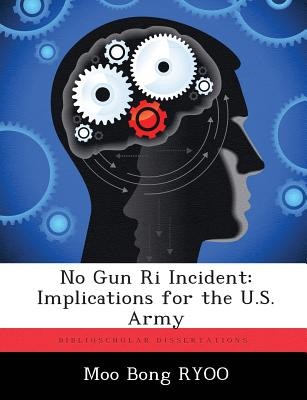
- We will send in 10–14 business days.
- Author: Moo Bong Ryoo
- Publisher: BiblioScholar
- ISBN-10: 1288290934
- ISBN-13: 9781288290932
- Format: 18.9 x 24.6 x 0.3 cm, softcover
- Language: English
- SAVE -10% with code: EXTRA
Reviews
Description
This monograph analyzes the common cause of the three incidents, Balangiga, No Gun Ri, and My Lai and discusses implications for the U.S. Army to prevent such incidents from recurring. The Balangiga incident took place in the last quarter of 1901, in Samar Island, the Philippines. The No Gun Ri incident happened between July 25 and 29, 1950 during the Korean War in the vicinity of No Gun Ri. The My Lai incident occurred between March 16 and 17, 1968, in Vietnam. In all three cases, the U.S. forces were involved in killing a large number of noncombatants. The monograph identifies three common elements that contributed to the cause of those incidents. First, in all three cases, the U.S. forces were not prepared to fight the enemy in an environment where the line between combatant and non-combatant is blurred. Understanding the U.S. forces' conventional fighting capabilities, the adversaries employed asymmetric means to negate their weakness, which was guerrilla type or unconventional warfare. On the other hand, the U.S. forces tried to confront the enemy in a conventional way. Second, in all three cases, the command climates motivated the soldiers to commit the wrongdoing. Some indicators that contributed in forming negative command climate include: dehumanization of the local populations, shared desire for revenge among soldiers and breakdown of small unit leadership. Lastly, the U.S. civilian and military leadership did not take proper disciplinary measures when the incidents had taken place. They did not punish soldiers for their wrongdoing and commanders for their command criminal responsibility according to the law. In the information age, the consequences of killing noncombatants extend far from the center. Ill-discipline on the battlefield will damage the legitimacy of the mission, and may ultimately result in losing a war by a shift in public opinion towards opposition from involvement in a war. Therefore, it is paramount importance for the U.S. Army to preve
EXTRA 10 % discount with code: EXTRA
The promotion ends in 20d.08:20:07
The discount code is valid when purchasing from 10 €. Discounts do not stack.
- Author: Moo Bong Ryoo
- Publisher: BiblioScholar
- ISBN-10: 1288290934
- ISBN-13: 9781288290932
- Format: 18.9 x 24.6 x 0.3 cm, softcover
- Language: English English
This monograph analyzes the common cause of the three incidents, Balangiga, No Gun Ri, and My Lai and discusses implications for the U.S. Army to prevent such incidents from recurring. The Balangiga incident took place in the last quarter of 1901, in Samar Island, the Philippines. The No Gun Ri incident happened between July 25 and 29, 1950 during the Korean War in the vicinity of No Gun Ri. The My Lai incident occurred between March 16 and 17, 1968, in Vietnam. In all three cases, the U.S. forces were involved in killing a large number of noncombatants. The monograph identifies three common elements that contributed to the cause of those incidents. First, in all three cases, the U.S. forces were not prepared to fight the enemy in an environment where the line between combatant and non-combatant is blurred. Understanding the U.S. forces' conventional fighting capabilities, the adversaries employed asymmetric means to negate their weakness, which was guerrilla type or unconventional warfare. On the other hand, the U.S. forces tried to confront the enemy in a conventional way. Second, in all three cases, the command climates motivated the soldiers to commit the wrongdoing. Some indicators that contributed in forming negative command climate include: dehumanization of the local populations, shared desire for revenge among soldiers and breakdown of small unit leadership. Lastly, the U.S. civilian and military leadership did not take proper disciplinary measures when the incidents had taken place. They did not punish soldiers for their wrongdoing and commanders for their command criminal responsibility according to the law. In the information age, the consequences of killing noncombatants extend far from the center. Ill-discipline on the battlefield will damage the legitimacy of the mission, and may ultimately result in losing a war by a shift in public opinion towards opposition from involvement in a war. Therefore, it is paramount importance for the U.S. Army to preve


Reviews